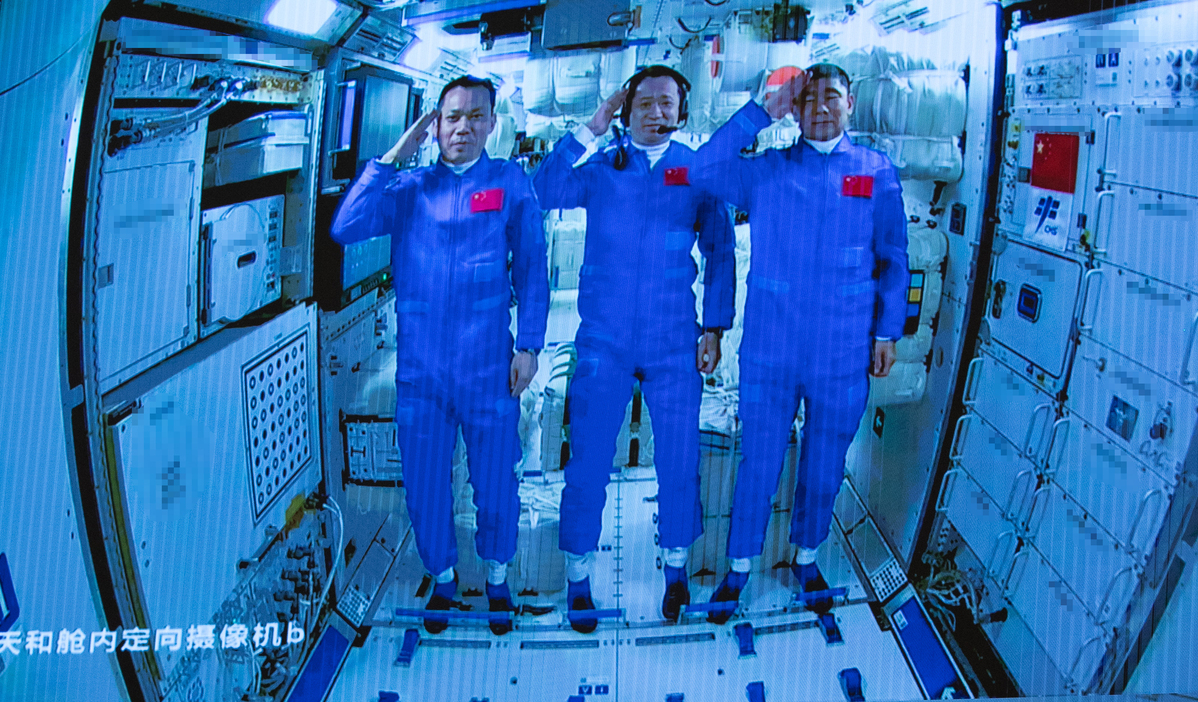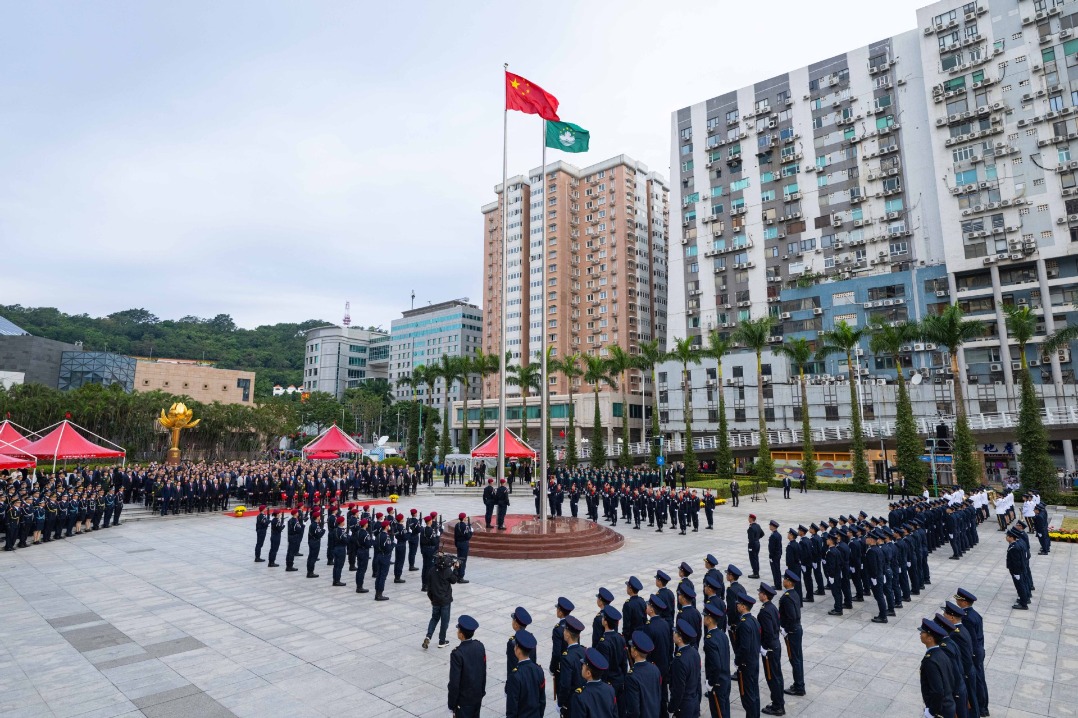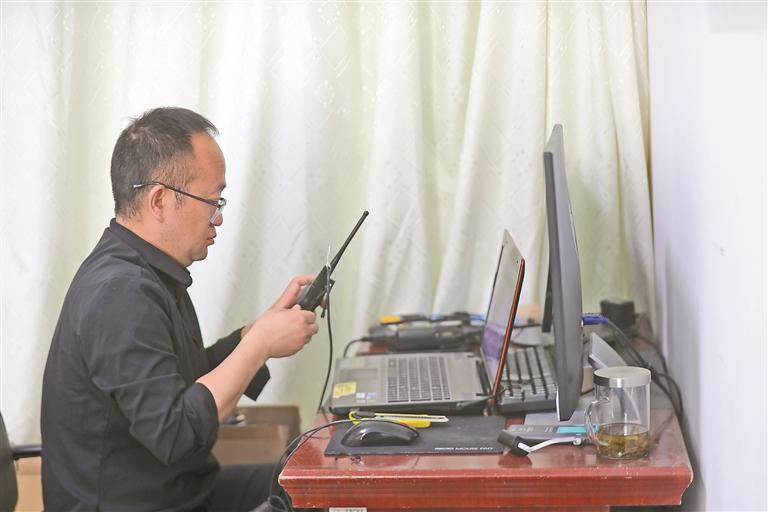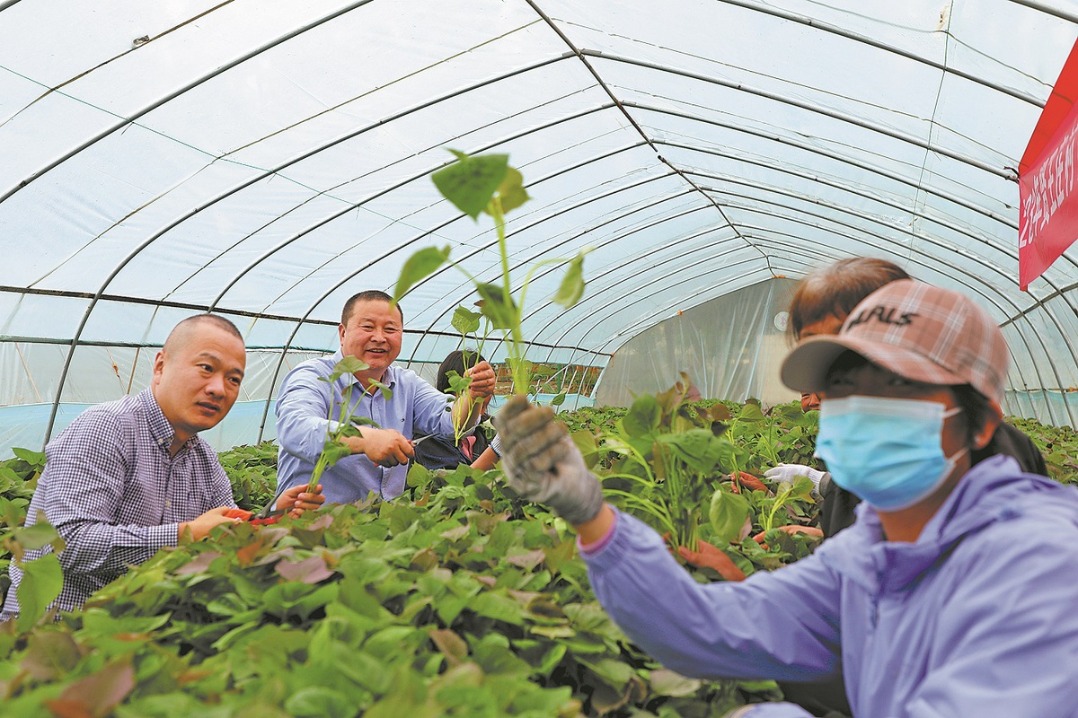Astronauts reach space station


Core module's first occupants carrying out tasks as pioneering mission begins
Three Chinese astronauts have entered the core module of China's permanent space station to embark on their three-month mission, becoming the module's first occupants and pioneers in one of the nation's grandest space endeavors.
Major General Nie Haisheng, Major General Liu Boming and Senior Colonel Tang Hongbo floated into the core module, named Tianhe, or Harmony of Heavens, at 6:48 pm on Thursday, after their Shenzhou XII spaceship linked with the module in a low-Earth orbit about 390 kilometers above the Earth at 3:54 pm.
They have begun to carry out their tasks inside the craft, which is the first and central section of China's space station, called Tiangong, or Heavenly Palace.
The all-male crew, from the People's Liberation Army Astronaut Division, was launched by a 20-story-tall Long March 2F carrier rocket, which blasted off at 9:22 am at the Jiuquan Satellite Launch Center in northwestern China's Gobi Desert.
After about 10 minutes, the vehicle put the 8-metric-ton spaceship into the orbit to rendezvous and dock with Tianhe.
General Xu Qiliang, a vice-chairman of the Central Military Commission and the highest-ranking uniformed officer in the Chinese military, and a host of senior officials watched the mission's launch at the Jiuquan center.
The three astronauts are tasked with testing and verifying plans, technologies and equipment for crucial elements of the Tiangong station's construction and operation, such as astronauts' long-term mission arrangements, life-support system, in-orbit resupply, extravehicular activity and spacecraft maintenance and repair.
They also will carry out other space tasks and experiments in Tianhe.
During the mission, the astronauts are scheduled to conduct two extravehicular operations, or spacewalks, to use mechanical arms to install equipment and check Tianhe's external condition.
Their work will enable the China Manned Space Agency to accumulate experience and check the capability, performance and compatibility of systems involved in the space station program to prepare for the next steps in its construction, according to Ji Qiming, the agency's assistant director.
The astronauts' host craft, the Tianhe core module, was lifted by a Long March 5B heavy-lift rocket at the Wenchang Space Launch Center in Hainan province on April 29.
Tianhe, the biggest and heaviest spacecraft China has constructed, is 16.6 meters long and has a diameter of 4.2 meters. The craft's weight, at 22.5 tons, is equal to the combined weight of 15 standardsize automobiles. It has three parts-a connecting section, a life-support and control section and a resources section.
The module is central to the Tiangong station's construction and operations, given that astronauts will live there and control the entire station from inside. It will also be used to host scientific and technological experiments.
The craft is now connected with the Tianzhou 2 robotic cargo ship, which was launched by a Long March 7 rocket from the Wenchang facility on May 29. The two craft docked with each other the next day.
Currently, Tianzhou 2 contains living materials and mission payloads for the Shenzhou XII crew to use, as well as propellants that will be used to refuel the core module.
Based on project plans, the Tianzhou 3 cargo ship will be launched in September to dock with Tianhe, and in October, another three-crew team will fly with the Shenzhou XIII to the module to stay there for six months.
In 2022, two large space labs will be launched to connect with the core module. Moreover, two manned missions and two robotic cargo flights will be made to continue construction of the Tiangong station, which is scheduled to be completed for formal operation to begin around the end of 2022.
One of China's most adventurous space endeavors, Tiangong will consist of three main components-a core module attached to two space labs-with a combined weight of nearly 70 metric tons. The entire station is set to work for about 15 years.
Upon its completion, Tiangong will be manned regularly by groups of three astronauts in periods lasting several months. During handovers to new three-astronaut groups, the station will accommodate up to six astronauts.
- China launches communication technology test satellite
- Spokesperson warns against aggression toward mainland fisherman
- Lhasa wetland reserve recognized as world's highest altitude wetland
- Chengdu woman sentenced for fatally stabbing neighbor
- Mainland coast guard's patrol in Xiamen-Kinmen waters to safeguard maritime order: spokesperson
- Independent committee starts work as HK moves to liquefy owners' group




































